Write once, run anywhere "at R"
我們借Java語言跨平台的slogan來形容今天的主角: Function
函式是一組陳述式的區塊,可以將重複會執行多次的陳述式獨立抽出來,方便隨招隨停。程式是否結構化、模組化,函式是關鍵之一,今天我們花一些時間來複習幾個內建函式,然後試試看自己寫幾個函式,有預設值輸入、傳址呼叫的。
進入R語言基礎的Part3: Function。
函式(function)可以輸入參數、執行陳述式,最後回傳輸出(return),R語法函式的參數會放在括號中,如下以逗號分隔。
function(參數1,參數2)
{
return(回傳參數)
}
*空括號表示函式不需要任何參數。
R語言內建的函式非常完整,從一般的數學算數、三角函數、排序、字串、日期及統計函式都有支援,再加上安裝Package後新增的函式,如果我們能熟悉且善用,在R語言中真正寫起程式的機會很少,我們就能將時間專注在使用上。
接下來,我們在資料夾MyR新增一支Day08.R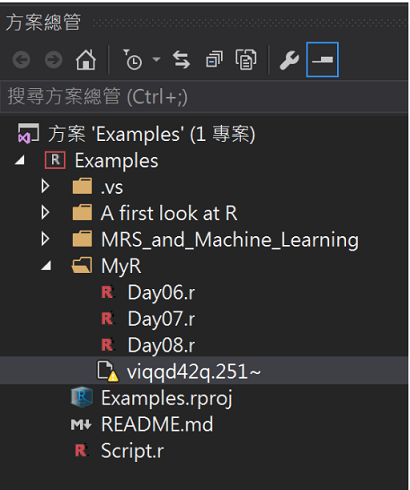
假設我們有以下需求:
列印1:10的數字
計算1+2...+100的平均值
計算1+2..+100的總和
分別可以用以下內建函式來解題:
在Day08.R中輸入程式碼
#Create a sequence of numbers from 1 to 10.
print(seq(1, 10))
#Find mean of numbers from 1 to 100.
print(mean(1:100))
#Find sum of numbers frm 1 to 100.
print(sum(1:100))
執行結果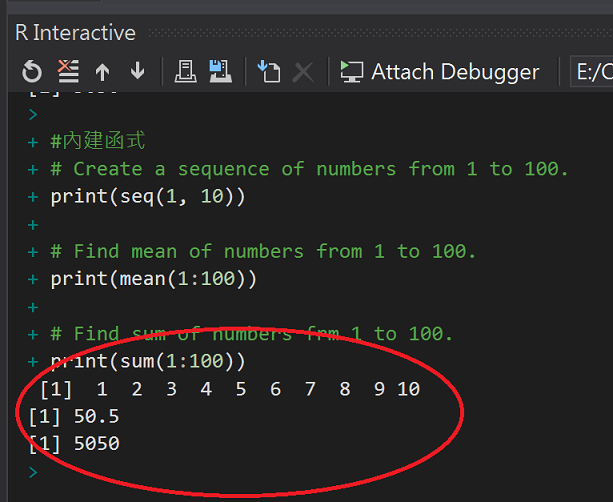
不用寫for迴圈,就完成了向量運算。
假設我們想計算一個數值陣列(1到5)中有多少個奇數。
在Day08.R中輸入程式碼
程式規格:
奇數就是被2除會餘1的數字, 利用for迴圈依序查輸入的一組數值class,若除2餘1,就將odd counter+1
#Create a function to get Odd count
OddCount.function <- function(x) {
o <- 0
for (n in x) {
if (n %% 2 == 1) {
o <- o + 1
}
}
return(o)
}
#Call the function
OddCount.function(c(1,2,3,4,5))
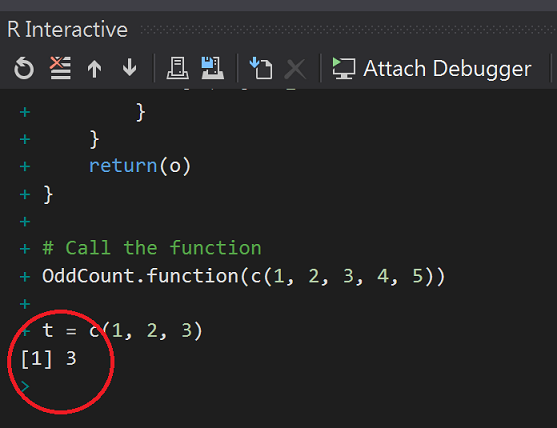
奇數有3個,回傳值只要在函式中寫return(o)。
假設我們新增一個乘法運算的方法,同時賦予預設值,新的乘法方法功能:
在Day08.R中輸入程式碼
#自建函式(有預設值)
#Create a function with arguments.
multiply.function <- function(x = 7, y = 9) {
result <- x * y
print(result)
}
#Call the function without giving any argument.
multiply.function()
#Call the function with giving new values of the argument.
multiply.function(6, 8)
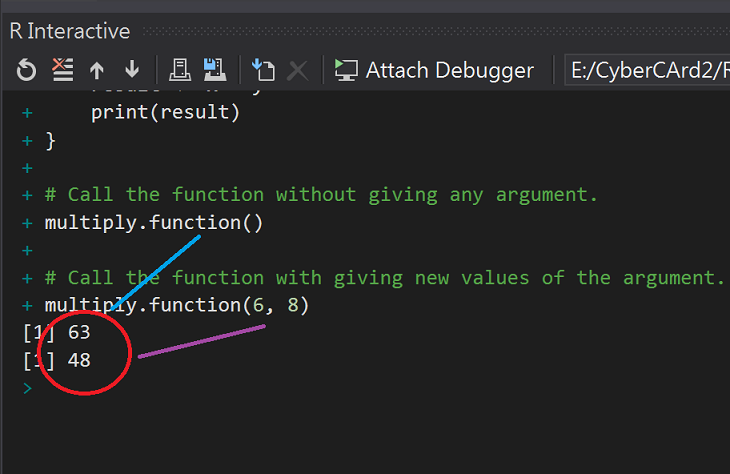
第一次執行沒有輸入參數,使用預設值7 x 9 = 63,第二次使用輸入參數 6 x 8 = 48
41J、記者正確!
R語言的函式通常是傳值呼叫
add.fucntion <- function(x) {
x <- x + 1
x
}
x <- 1
add.fucntion(x)
x

函式中 x = 2,但呼叫完函式後,外層的x還是1,原來外層x位址的值並不會改變。
但如果想要傳址呼叫? 除了 x <- f(x)重新指派外,因為只能回傳一個值,來找第二種解法,可以在函式內改變x的值。
add.fucntion <- function(x) {
value <- x + 1
eval.parent(substitute(x <- value))
}
x <- 1
add.fucntion(x)
x
#help(eval.parent) Evaluate an (Unevaluated) Expression
#help(substitute) Substituting and Quoting Expressions
執行結果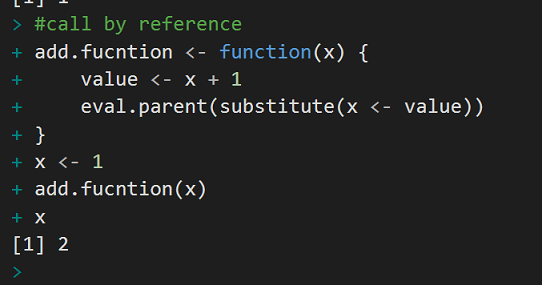
重點就是使用eval.parent及substitute函式
複習完了函式,突然點開Variable Explorer,發現了一個小地方:
R語言沒有宣告變數的概念,使用變數前不需要事先宣告型別也!
其實R和Python都屬於較鬆散型態的程式語言,相較C++、C#、Java、Swift等強調記憶體儲存空間、重視變數的生命週期有很大不同。
因為昨天沒關電腦,我們點開變數視窗查看:
昨天Day07.R 範例程式碼中的變數都還在!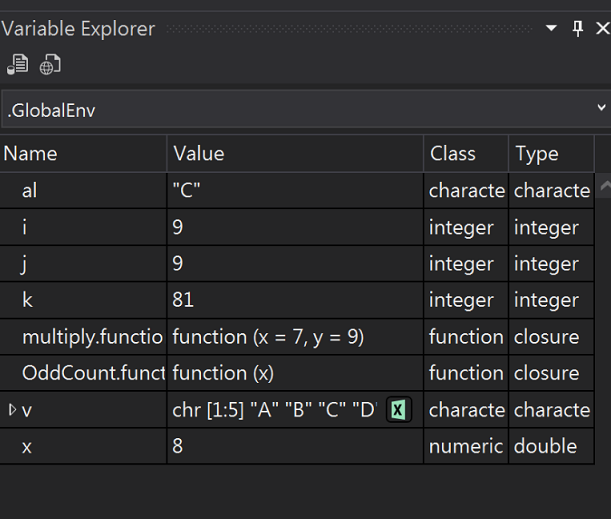
如果想要清除所有變數,執行以下R Script就可以了
rm(list = ls())

A Big Function:Emirates A380

2015-10 攝於巴塞隆納機場,加泰隆尼亞(spain)
